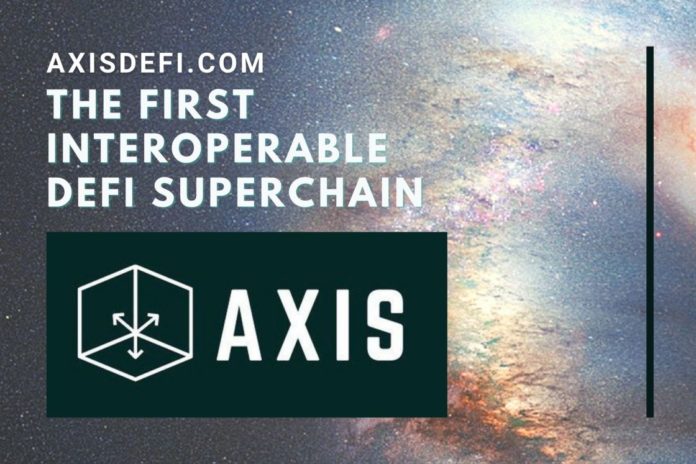
The evolution of Decentralized Finance (DeFi) has reframed the role major financial institutions play in our lives. The global financial industry has shown strong interest in DeFi due to its blockchain-based infrastructure and the promise of decentralization.
The DeFi market has been booming this year in 2020 with different DeFi tokens like Chainlink (LINK), MakerDAO, Aave and YFI making big moves. While the DeFi market is receiving immense popularity, we are still at the nascent stage of its development. Moreover, the majority of the DeFi market is still Ethereum based. With recent transaction fees reaching as much as $250 and minutes of transaction speed time, the infrastructure is just not there yet.
The existing DeFi infrastructure is not sufficient to accommodate big financial players while simultaneously catering to their more complex requirements. Some of the key areas like governance, growth, and risks in DeFi, needs to be addressed for the overall DeFi market to mature and thrive.
This is where Axis DeFi comes into the picture as it aims to expand the DeFi market and build an interoperable super chain with “native, margin enabled, customizable synthetic DeFi assets with built-in risk mitigation”.
AXIS is a dedicated DeFi protocol that offers Wall Street-grade functionalities and absolute user-flexibility for different risk preferences. The AXIS DeFi protocol is the first to offer on-chain margin implementation that is up to 16x of the highest trade profit level. AXIS aims to become the future of open finance allowing users to create their own customizable risk profile.
To understand how AXIS differentiates itself from the rest of the DeFi protocols, while maintaining the true ethos of decentralization, let us look at the complete picture.
AXIS – A Truly Decentralized and DeFi Protocol with Risk Mitigation Built-in
Some of the experts have raised concerns with most of the existing DeFi infrastructure and the governance model around it. Currently, the concepts like Yield Farming – the new high-interest reward scheme – are thriving in the crypto markets.
We have also seen valuations for many cryptocurrencies, using Yield Farming business models, skyrocketing in recent times. It is no doubt that the early stage instances serve as a catalyst to the early growth of DeFi, however, there some flaws still exist.
Yield Farming thrives on the concept of distributing the DeFi governance tokens to investors. Now, the governance tokens are responsible for bringing improvements to the DeFi platform and providing core functionality to the DeFi protocol.
Thus, analysts predict that in the long-run, the crypto whales will consolidate their holdings for the DeFi tokens and will go to dominate the respective DeFi projects. The risk here in such a case is that there’s no guarantee of the value of governance token remaining high all the time.
Thus, if the governance tokens become volatile in nature, the Yield Farming protocol won’t be giving as high returns as now.
The AXIS protocol and governance structure has been developed keeping this foresight and with an on-chain built-in protection mechanism that mitigates the risks posed by the crypto whales.
Core Components of AXIS DeFi Superchain
The AXIS DeFi Superchain offers distributed ledger service. AXIS is a true third-generation DeFi protocol that has a native AXIS coin that serves as the utility token to carry all DeFi functionality. The AXIS Superchain implements Delegated-Proof-of-Stake (DPOS) consensus mechanism to offer staking gains to validators. Recently, the platform has also introduced its AXIS co-builder rewards program.
Besides, the DeFi contract virtual machine extends DeFi functionality with interoperability to third-generation blockchain platforms.
The AXIS technical architecture comprises of two major important components: the DRM (Decentralized Risk Monitor) and the DACP (Decentralized Adaptive Counter Party Pool). The DACP serves as the central counter-party for all traders on the AXIS platform.
The DACP provides all the crucial account information like margin confirmation, fund checking, adaptive rate update and final asset clearing. On the other hand, DRM serves as the risk control center with the AXIS DeFi ecosystem.
DRM frequently updates the margin rates for all participants including LP, DACP, and other traders. It also has a built-in mechanism that will hang up the Axis system for some 15-minutes time-period whenever the DACP_AR drops below a certain level called the market meltdown. This ability of AXIS to halt trading serves as a security feature for traders and is seen only on professional exchanges like the NYSE.
The DEMS (Decentralized Execution Management System) of AXIS serves as the core “trade engine” as it can directly execute orders with a decentralized counter-party (DACP) without any books.
The external data sources called Oracles help to source asset quotes. The DEMS integrates these quotes with its adaptive algorithm to adjust the asset price for execution.
To summarize, some of the key benefits of AXIS protocols are:
- Flexible DeFi architecture with higher interoperability
- Multi-asset integration with simple plug and play features
- Good on-chain margin trading capabilities
- Ability to construct complex DeFi derivatives using extraordinary blockchain power.
- Robust and Secure Protection Mechanism from Collateral Pool Collapse or Market Meltdown
- Individual customization risk control with enhanced capital security.
Conclusion
AXIS aims to create a DeFi ecosystem and governance infrastructure that is future-ready and maintains the core ethos of decentralization while addressing all the existing challenges and risks.
Related

cryptoshib.com is author of this content, TheBitcoinNews.com is is not responsible for the content of external sites.
Our Social Networks: Facebook Instagram Pinterest Reddit Telegram Twitter Youtube










